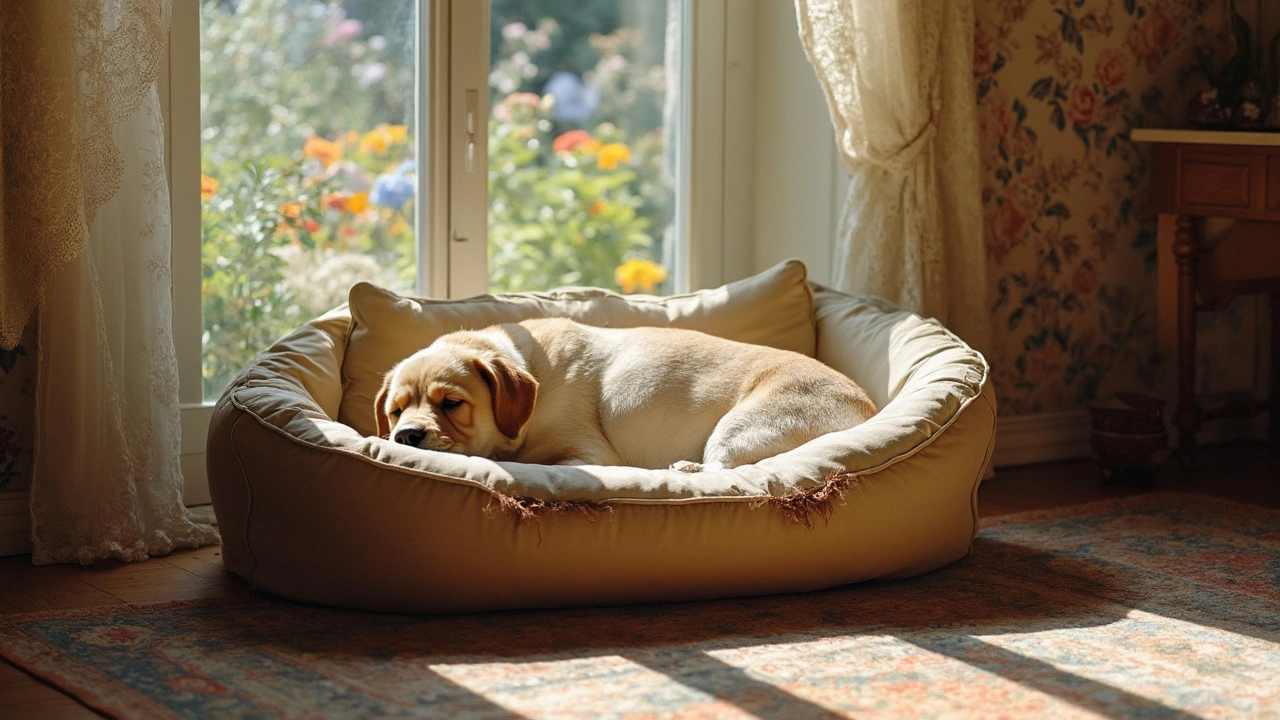Replacing Your Dog's Bed? Here’s a No‑Fluff Guide
When you notice your dog dragging their old bed around or waking up with sore joints, it’s a clear sign the bed needs an upgrade. A good bed does more than look cute – it supports hips, eases anxiety, and keeps your home clean. Below is a step‑by‑step rundown that helps you choose a replacement that actually works for your pup.
1. Size Matters – Measure First
Before you click “add to cart,” grab a tape measure and note your dog's length from nose to tail base, then add a few inches for wiggle room. Small breeds like Chihuahuas usually need a 24‑30 in. crate‑style bed, while a Labrador will feel cramped in anything under 36 in. If your dog loves to sprawl, go a size up. A good rule of thumb: the bed should be at least as long as your dog’s stretched-out body.
2. Think About Sleeping Style
Does your dog curl up like a ball or stretch out like a log? Curlers benefit from bolstered sides that give a sense of security, whereas stretchers need a flat, low‑profile surface. Some beds combine both – a raised edge on three sides and a roomy middle. If your dog has arthritis or joint pain, look for memory‑foam or orthopedic layers that hug the body without losing shape.
Materials are another factor. Waterproof liners protect the mattress from accidents, while removable, machine‑washable covers keep odors at bay. For allergy‑prone pups, opt for hypoallergenic fabrics like cotton or bamboo. A breathable cover also helps regulate temperature – a plus in both winter and summer.
3. Durability vs. Comfort
Chewers will test any bed’s limits. If your dog loves to gnaw, choose a bed with a reinforced base or a chew‑resistant cover. Look for double‑stitched seams and rip‑proof fabrics. For non‑chewers, a plush, soft top layer can be a treat, but be sure the core stays supportive after a few weeks of use.
Price doesn’t always equal quality, but a bed under £20 often skimp on supportive foam or durable covers. Mid‑range options (£30‑£60) usually hit the sweet spot between comfort and longevity. Brands sold by Nelson's Equestrian and Pet Supplies balance these factors and ship across the UK.
4. Placement and Maintenance
Where you put the new bed matters. Dogs love a quiet corner away from drafts, but those who enjoy being part of the family may prefer a spot near the sofa. Rotate the bed every few weeks to keep the foam even and extend its life. Most covers are machine‑washable; just follow the label – cool water, gentle cycle, and low heat dry.
If you’re switching from a crate mat to a free‑standing bed, give your dog a few days to adjust. Keep the old bed nearby for a night or two; the familiar scent can ease the transition.
Ready to replace that tired old bed? Head over to Nelson's Equestrian and Pet Supplies, filter by size, ortho‑support, and chew‑proof features, and you’ll have a fresh, comfy spot for your dog in no time.
When to Throw Out a Dog Bed: Signs It's Time for a Change
Is it time to say goodbye to your dog’s bed? Spotting the signs can be crucial for your pet's comfort and health. From visible wear and tear to unwanted odors, several factors help determine when a dog bed should be replaced. Understanding these signs ensures your four-legged friend enjoys a clean and cozy space. Discover practical tips on recognizing when your pup’s bed has seen better days.
